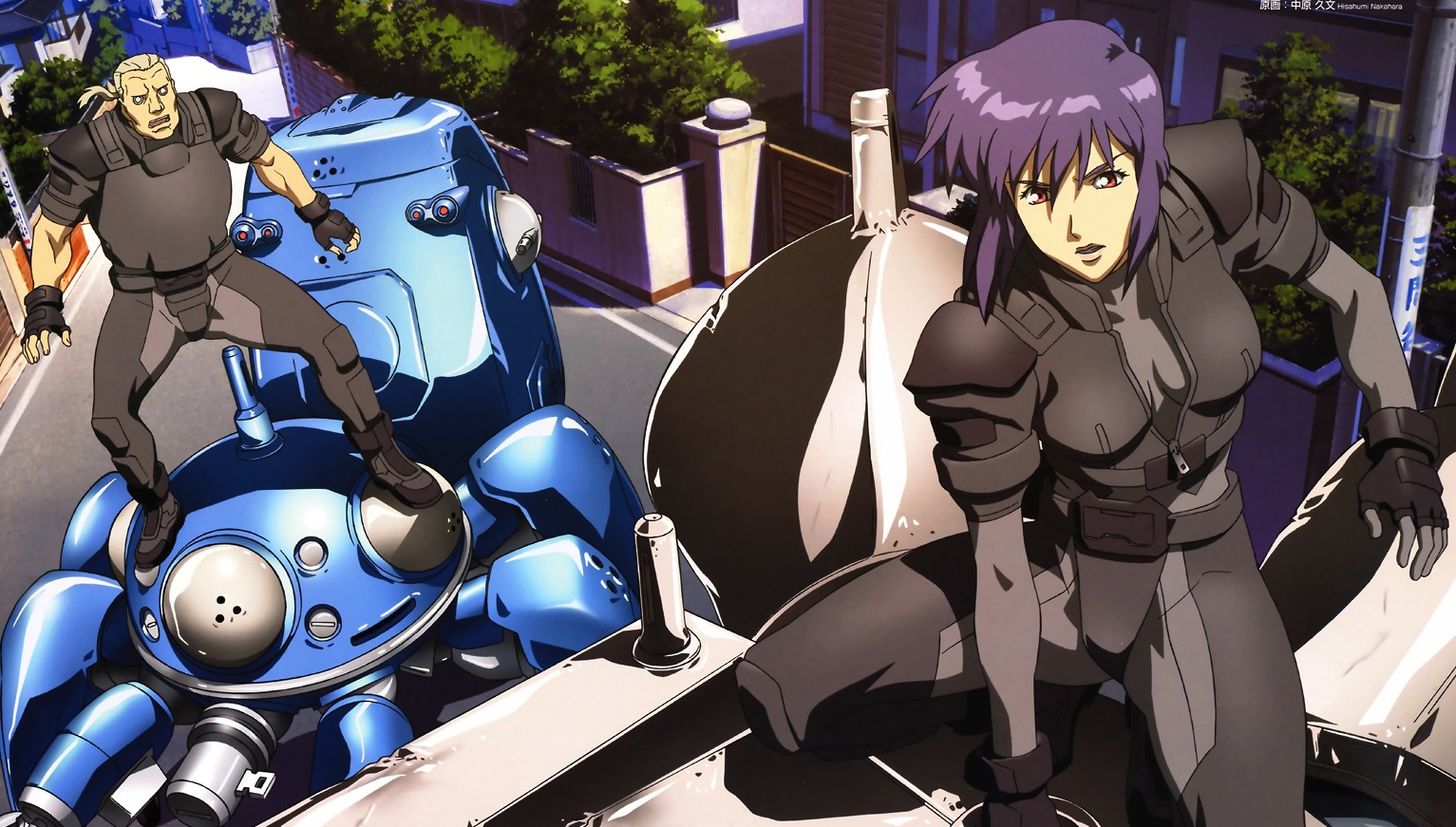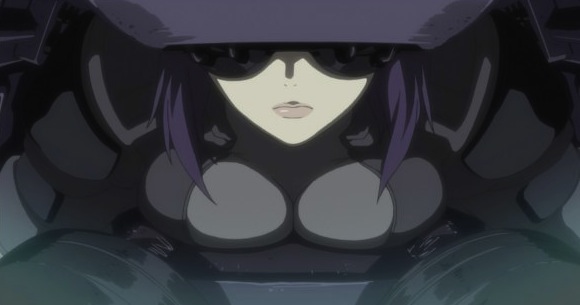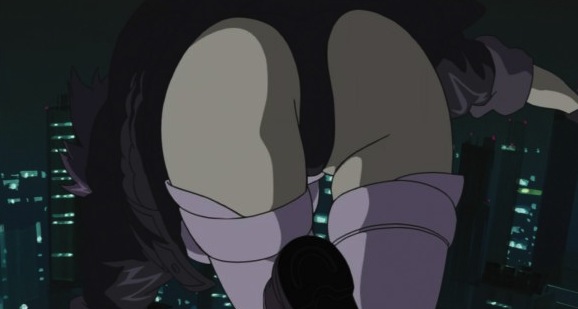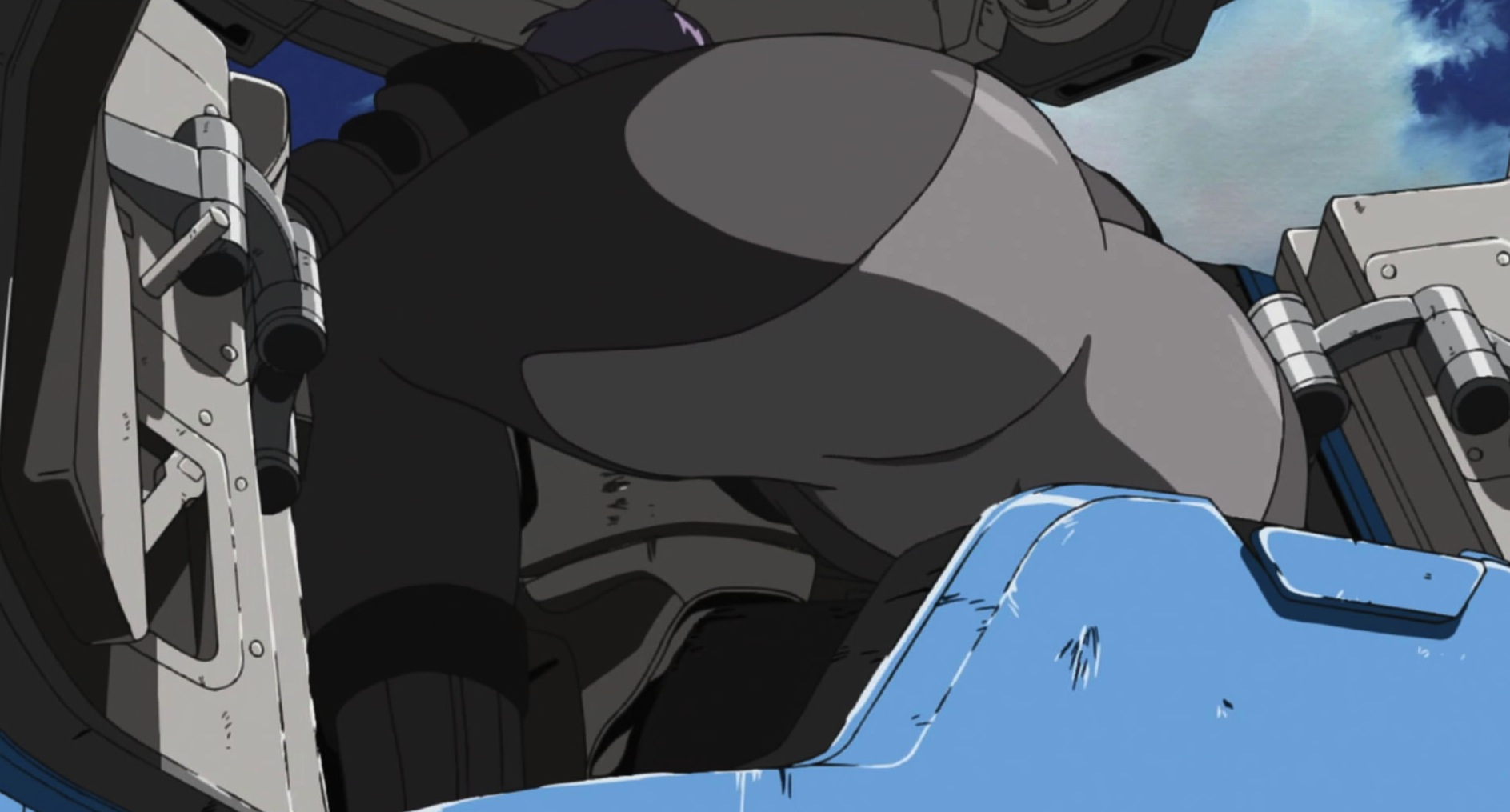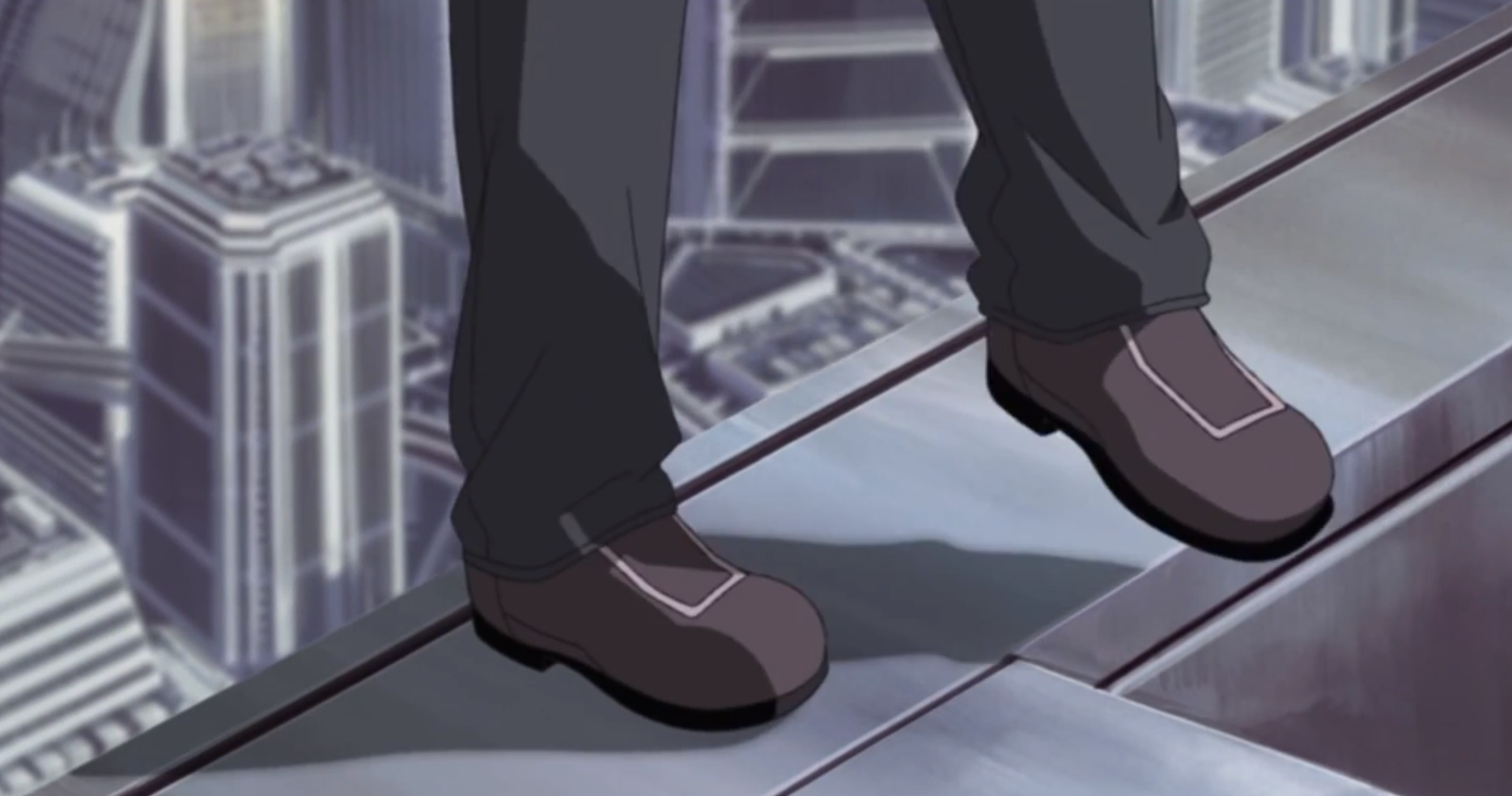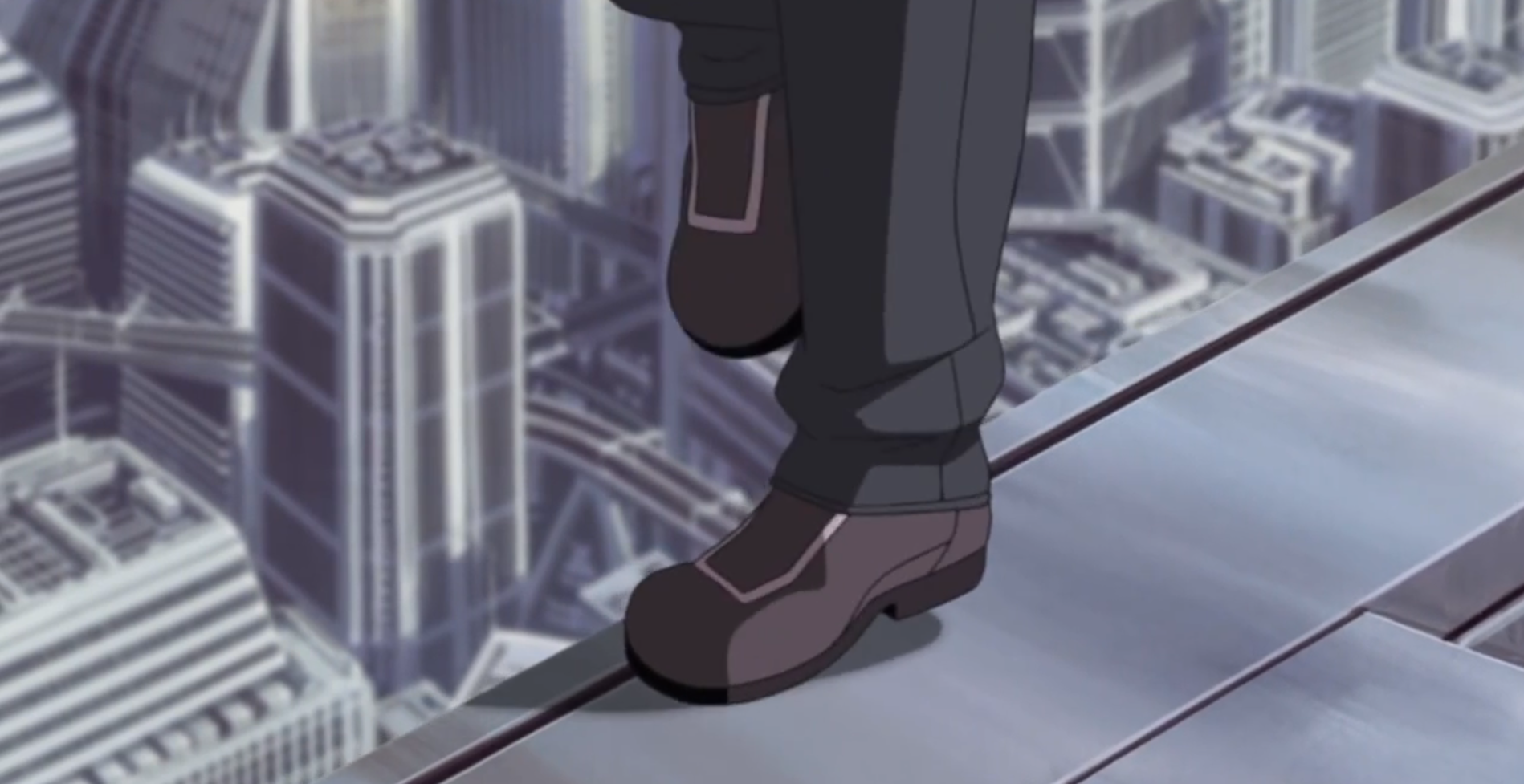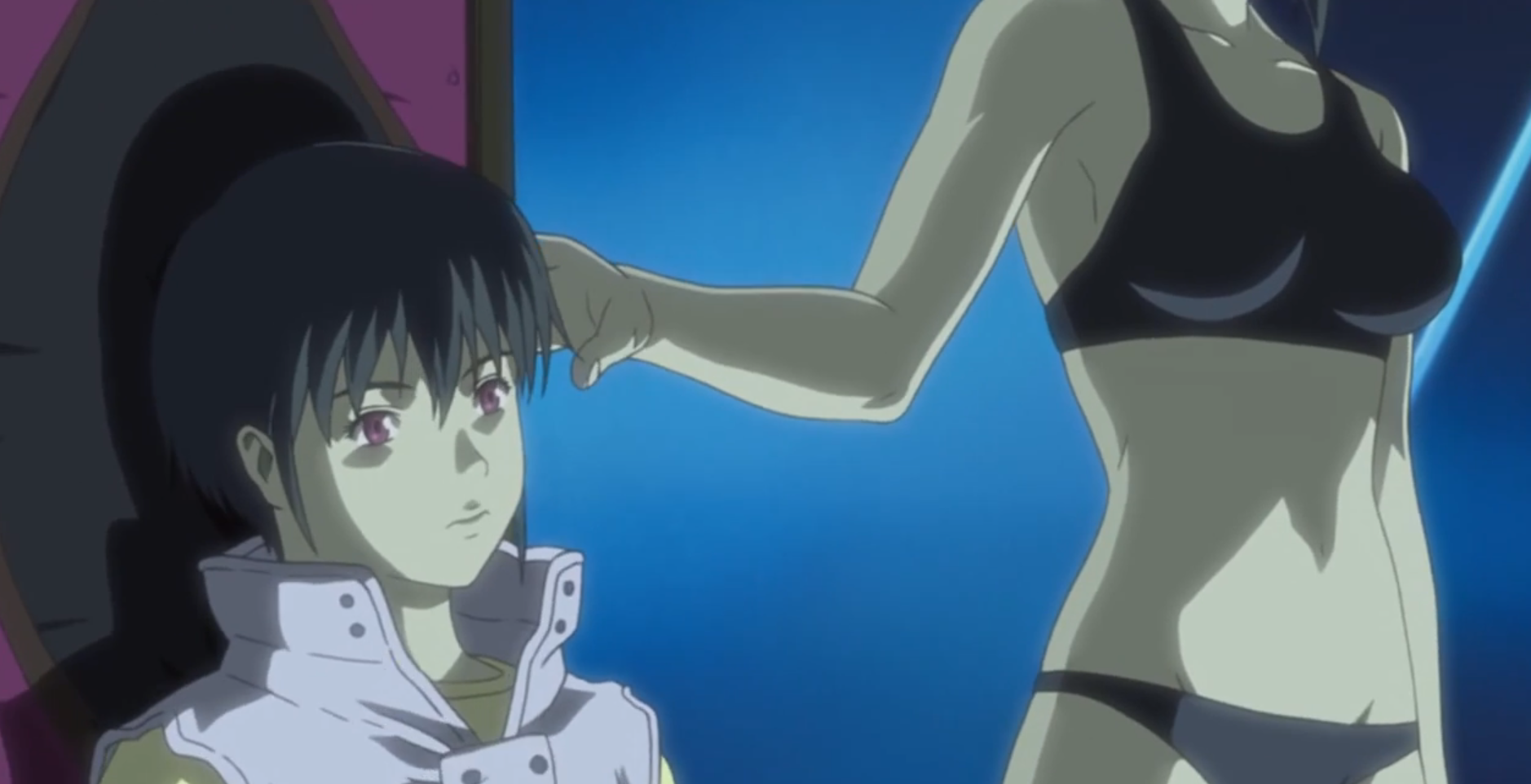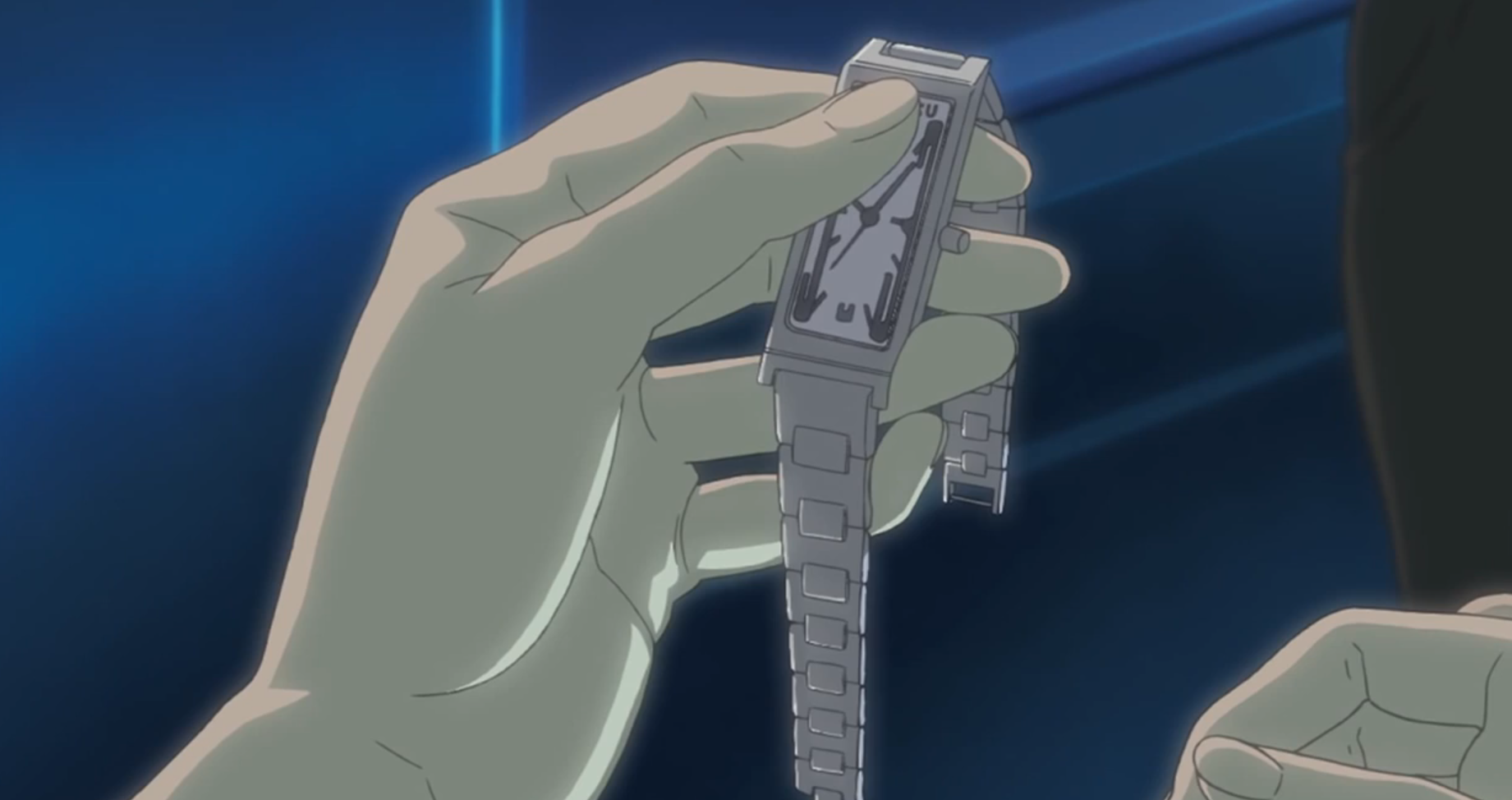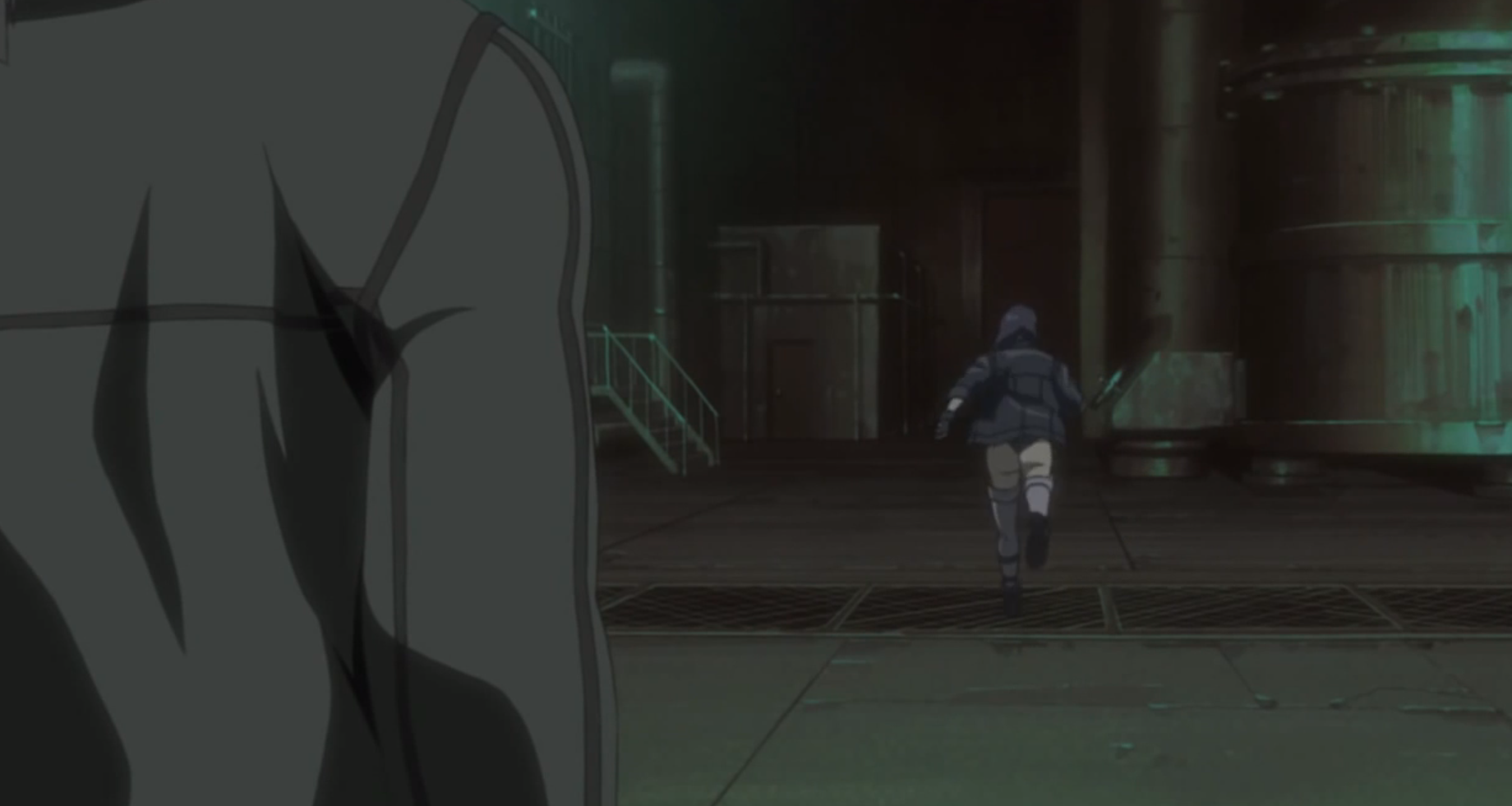The Major, or Motoko Kusanagi, is the protagonist of each incarnation of the Ghost in the Shell manga-anime-merchadise franchise. If you care to google, Motoko Kusanagi is autocompletes to “a man” and “is hot,” then “in bed with a boy” and “in bed.” For a science-fiction philosophy character named for her military position, we (the audience — although I don’t limit this to those who have experienced the fiction, as the Major is iconic) sure are caught up in thinking about her gender and sexual status. This is part 3 of a pan-franchise series (find part one here and part two here).
2002’s Ghost in the Shell: Stand Alone Complex was an animated series which served as a reboot or alternate canon for Ghost in the Shell; using themes, motifs, and the odd scene redux from Oshii’s work, as well as Shirow’s original manga, to make a new whole: a long-form detective procedural set in the world of cyber crime, complete with the existential musing that GitS fans expect. This version of the Major’s body is surely a sexualised object, with shine on bulges, lips emphasised through colour and sometimes glossy shine, the return of individual-breast bodysuits, and voyeuristic “camera angles” (in some scenes the cels are low-detail illustrations of the Major’s elevated buttocks and lower vulva, coloured grey to communicate that the character is wearing a skintight bodysuit).
“Nay! It is more than possible to fap to the Major, there’s nothing wrong about it, and I’ll provide the coverage to prove it!”, says a fan whose delightful spank-bank overview I took the above screen caps from. Charming! Below: glossy lips.
Stand Alone Complex was the point at which I finally connected with the franchise as a fan — beyond prizing the Major, alone, as a hair & competence icon. “There’s a stronger element of story” is a true-sounding way to explain why. Less a character piece about the Major’s path to becoming a fused life form, than an ensemble procedural with heavy emphasis on political intrigue, frequent betrayal and double agency; truly criminal mystery, with cases that impact the core cast rather than hinge upon them. This is similar to Shirow’s source manga (some scenes are lifted directly), but longer, better balanced, and expanded.
I first became aware of the questions GitS:SAC held for me when I feminist-checked myself on a scene in the twentieth episode, eight years ago. Togusa, the most recent pre-series recruit to the team, has taken his theories and conjecture to the Major to ask for approval to move on the current investigation. They’re on the roof: the Major on the very edge, performing leg-swings and turns which draw attention to gravity and the idea of “almost–!”
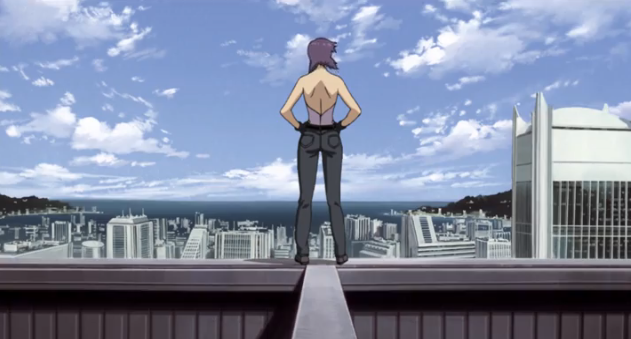
 She wears tight, low-slung trousers over an ultra-high leg leotard-basque hybrid. Strapless, with cup shapes cut to mimic the shapes of breasts seen from another angle. She has fingerless gloves in a dark colour similar to the trousers, framing the pale colours of her skin and her basque, as the thigh-highs and belts did for Oshii’s Major in 1995. The wind blows her air around the input ports in her bare neck.
She wears tight, low-slung trousers over an ultra-high leg leotard-basque hybrid. Strapless, with cup shapes cut to mimic the shapes of breasts seen from another angle. She has fingerless gloves in a dark colour similar to the trousers, framing the pale colours of her skin and her basque, as the thigh-highs and belts did for Oshii’s Major in 1995. The wind blows her air around the input ports in her bare neck.
Dive with me: it’s 2006, I’m just discovering internet feminism and how to check myself — to observe, maybe fix, how I’m starting to understand that I’ve wrecked myself. “What does Togusa think about interacting with her when she wears that stuff? Is he aroused? Doesn’t she remember that he has a wife he barely gets to see? Why is she dressed so sexually at work?” That’s what arrives in my head, and I stop. I have to ask: do I agree with that?
At this time I’m also starting to understand the separation of in-world events from author decisions. Why have the creative powers dressed her this way? Because they want to inspire boners, is my guess then. And it’s my guess now; maybe it’s for other reasons too, but I still fully believe in that first-occuring one.
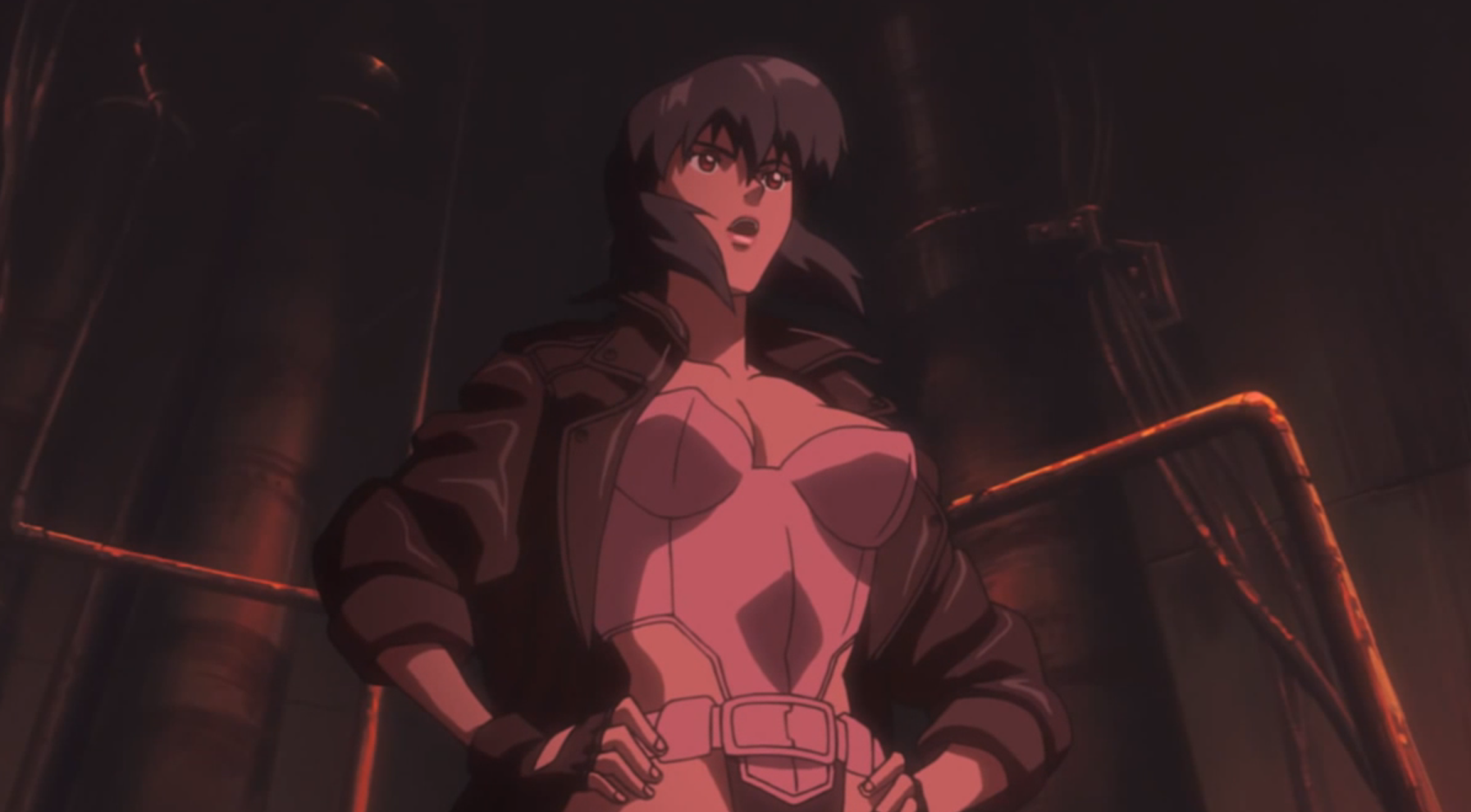

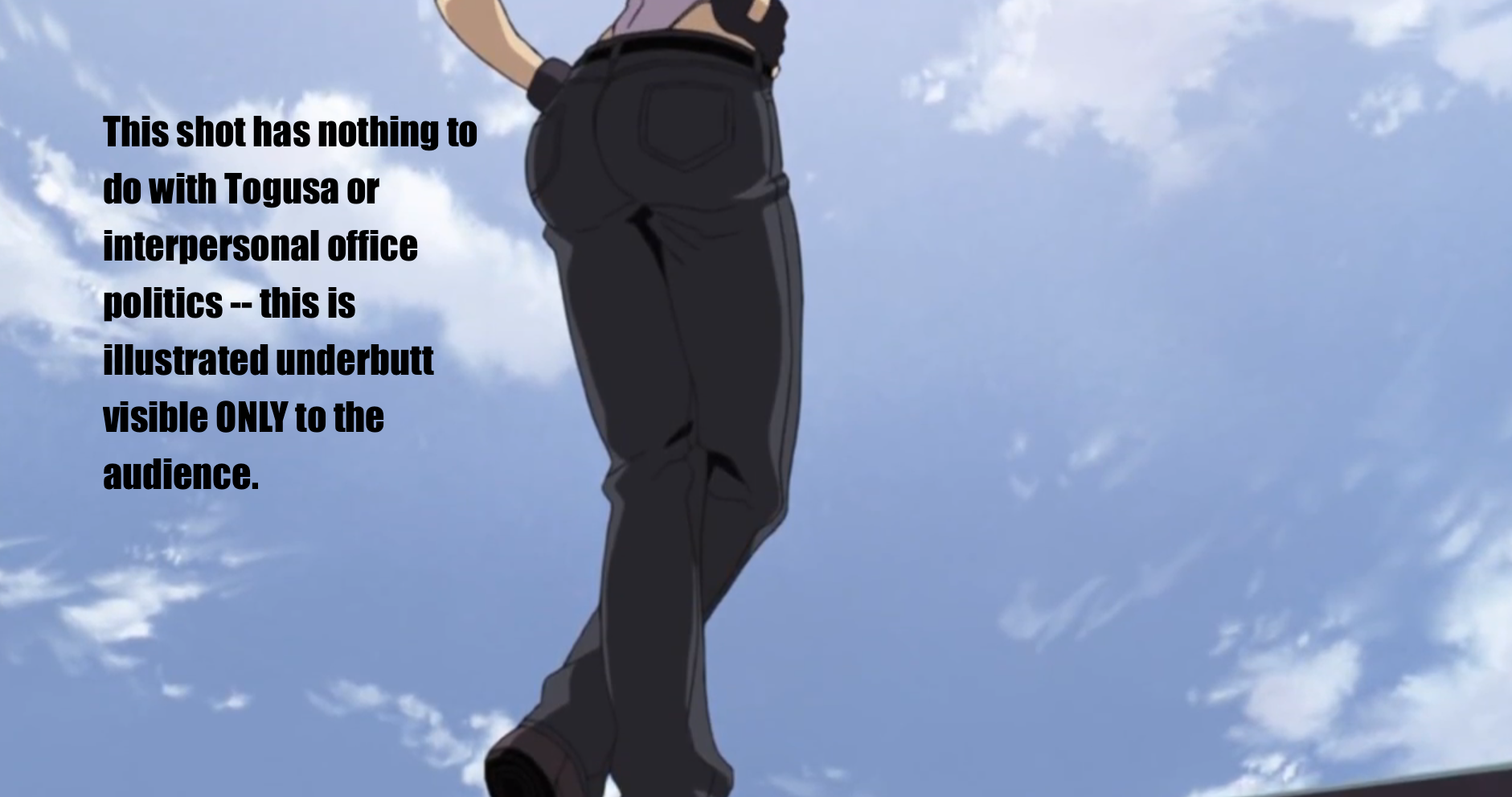 In a case like this (when you’re asking yourself why you’re blaming a woman character for something), in-world reasoning is useful to consider. Pretend the character is a real person. Nobody can exist comfortably by thinking first, or only, of the comfort levels of others. Togusa’s responsibility is to disengage with sexual presentation, or not. Does he respect the Major as his professional superior? Does he respect the relationship he has with his wife? Does he respect women as people, existing outside of his orbit? Does he respect himself as a human ruled by more than programmed-in voyeurism? Does he respect his own relationship to sexuality? That’s his bag. These are the responsibilities of reaction which come first.
In a case like this (when you’re asking yourself why you’re blaming a woman character for something), in-world reasoning is useful to consider. Pretend the character is a real person. Nobody can exist comfortably by thinking first, or only, of the comfort levels of others. Togusa’s responsibility is to disengage with sexual presentation, or not. Does he respect the Major as his professional superior? Does he respect the relationship he has with his wife? Does he respect women as people, existing outside of his orbit? Does he respect himself as a human ruled by more than programmed-in voyeurism? Does he respect his own relationship to sexuality? That’s his bag. These are the responsibilities of reaction which come first.
Dicking about on the edge of a roof is trollish behaviour, even when you aren’t wearing a breast-motif basque (the “nipples” always make me think that sometimes the cups must sag down a bit — they don’t look particularly reinforced — and she has to haul them back up again by those tabs; a last-minute sort of practicality), but a sense for the absurd isn’t a sin. She does her job, she’s professionally supportive, she’s not dangerous or malicious. She’s just hot dressed as hot. What does that mean?
You see what I mean about the nipple-shaped cups?
The Major’s body is fully prosthetic. This is mentioned again and again and directly referenced in the opening sequence of every episode. She’s well-paid and has extensive connections; she could look any way that she likes. She remains “a woman”, referred to as “she” (translated), in “a female body”, which Batou specifically describes as gendered (he’s not corrected by character or narrative), and both sexually and aesthetically idealised (are these identical? How wide is the overlap?). Why? I would love to read commentary on this series from a writer who does not assume the series regards gender as primarily binary.
Within the Stand Alone Complex continuity, the Major found herself within a prosthetic body when she was a little girl. She was six: not old enough to give legal consent. She was not old enough to consent with full understanding to full prosthesis — it is something she’s had to deal with since. No choice. She’s a survivor of prosthesis.
The Major has been given new bodies as she ages, at age-appropriate intervals. What’s your image of yourself? Can you disengage from what you’ve been given? The medical profession is currently male-dominated, in Britain, America, Japan… Ghost in the Shell does not, at any point, suggest a post-sexist society.
Biology is not destiny; we’re all free to change our bodies to fit our self-image. A cyborg has almost no biology and is all destiny (how long might they live?). The Major’s ghost, presumably, tells her she’s a woman. What are the bodily choices she’s given? All of the female prostheses, cyborgs, and androids seen in the franchise are similarly babely along a very narrow template: long-limbed, slim, toned. Pert and rounded breasts and buttocks; pretty, low-detail face. Elegant.
Does her adult body match her childhood prosthetic body? As seen in season two and suggested in season one: yes.
Why choose to differentiate yourself from your old self — from the physical continuity that has been applied to your awareness — in the name of not being accidentally attractive?
Are they advantages to, or opportunities within, being attractive? Yes there are. Are there disadvantages and perceived obligations? Can it be uncomfortable? And are there ways to achieve things other than through attractiveness, normativity, or the ability to be underestimated?
Yes.
Why stick with a body despite the opportunities it doesn’t give you? Batou asks her, early in the season, why she sticks with “that female-model body”. Switch to a male chassis, increase your strength and physical power, he says. She ducks out of the question, physically besting him with her hacking skills (under her cyberbrain-hacking instruction, he punches his own face). The Major says that while she can out-think Batou, she doesn’t need to outmatch his bodily strength. I don’t like this exchange; it sounds too much like women are weak but they’re cleverer — which isn’t true enough to serve.
Existing in-story in a fully manufactured body, being under creative control of animation professionals who present her as a sexual prospect, the Major allows me to consider from just the right distance: what does it mean to have one of these? A “woman’s body”.
What does it mean for me to filter all of my experiences through this physical object, meat, bones, etc, and to exist inescapably within perceptions that hinge upon the visual? Before it was mine, this body existed as a concept. I was a child once and the female body existed before I reached puberty. Before I’d finished growing into it, I was grappling with what my adult body meant people would think I should do for them. I was frightened and resentful of what it meant I would have no choice but to “be”. I am more likely to be observed from afar than I am to register as a whole person — my ghost comes in second, and my shell cannot escape observation (you are a woman with a man inside…). Why don’t I cut my hair alarmingly and have my breasts removed and slouch and receive poor dentistry? Why don’t I escape from being womanly?
What use has a cyborg for nipples? They aren’t reproductive there. So what need has a cyborg for breasts?
What need has a cyborg for a working mouth when it can produce dialogue through hidden speakers or wifi communication? To smile, to comfort, to humanise. Breasts for gendering or communicating atmosphere of character, or feeling gravity in a different way to the rest of the body, or using for personal stress balls, or just… experiencing. Nipples for sensualising a sterile body. Tell the weather with them, realise how tense you are. What need has a human for nipples or breasts, if they don’t plan to or can’t reproduce? Are your breasts for child-feeding, only? How sexually invested in them are you? Do they matter to you when you’re not fucking or feeding? Would you give them up? Are they you, or are they tools you own? Do they belong to you or are they a part of you? What do they mean? To you?
In the last-but-one episode of Stand Alone Complex season one, it happens again: Batou gives the major a piece of apparel in order to demonstrate his protective urges. But it’s different this time.
Batou returns her wristwatch to her (important note: she takes it when it’s offered). Instead of a jacket she patently doesn’t need, it’s her treasure — something she remarked aloud to him about missing. He has risked his life and wounded his body to retrieve it for her. In this incarnation, he finally achieves his desire to protect… something that matters to… her. The Major — finally! — admits that her body is her body: “This body’s always suited me. No other will do.”
Just previous to remarking upon the loss of her watch, the Major is seen from behind, at a distance, in a composition mirroring the water fight scene of Oshii’s Ghost in the Shell. The thigh high leg sheaths are there, and a heavy jacket over the high-cut leotard-basque mimics the hip-focusing slung belt of the earlier image. It’s not just the basics that are repeated. Her buttocks aren’t detailed, they aren’t rounded, and her posture does not suggest sensuality. She’s not actively sexualised here: her body is not given by animators to audience as a sexual prospect. Despite the many times within the series when it has been.
Nothing is immutable.
Freedom.

